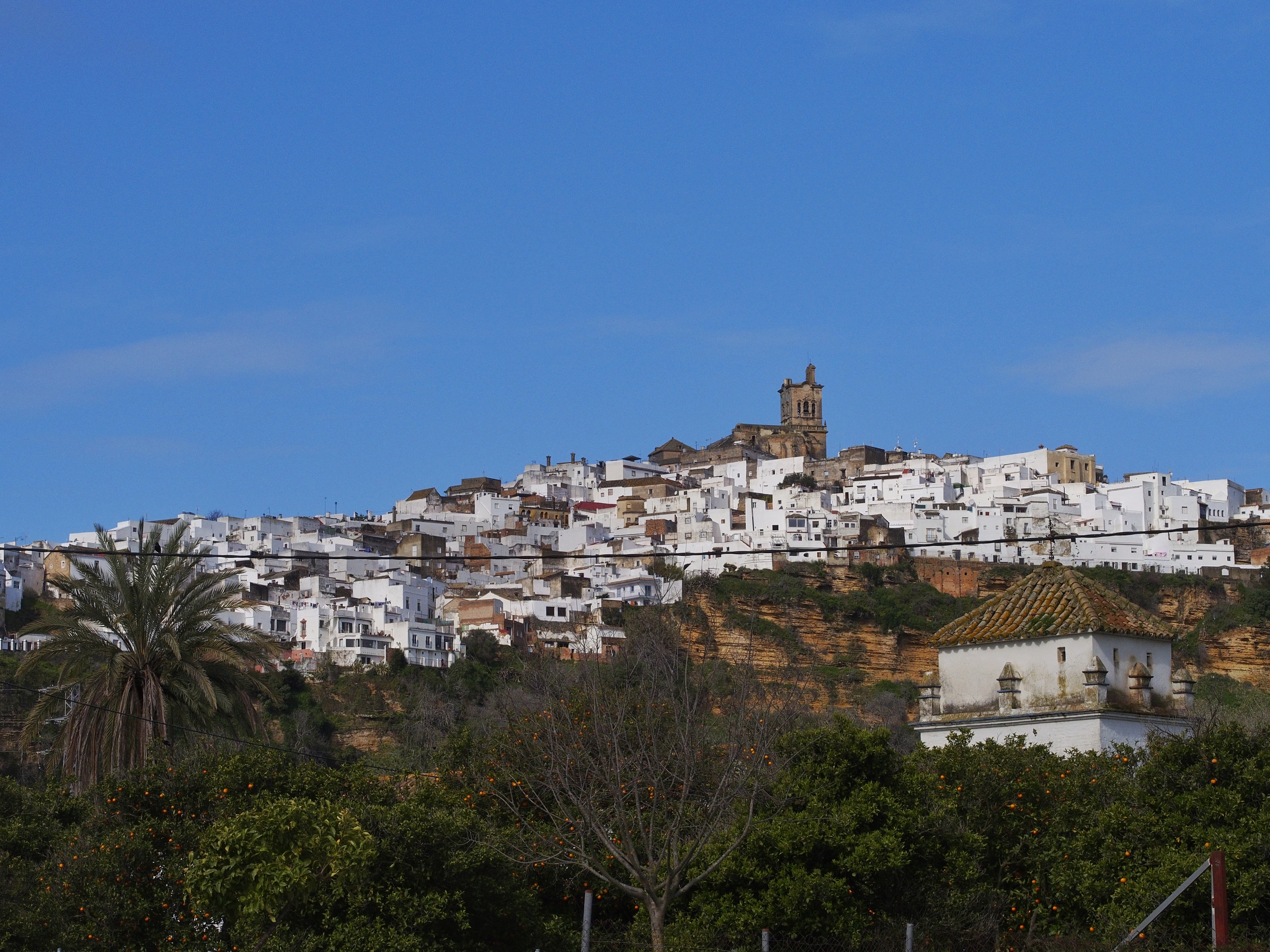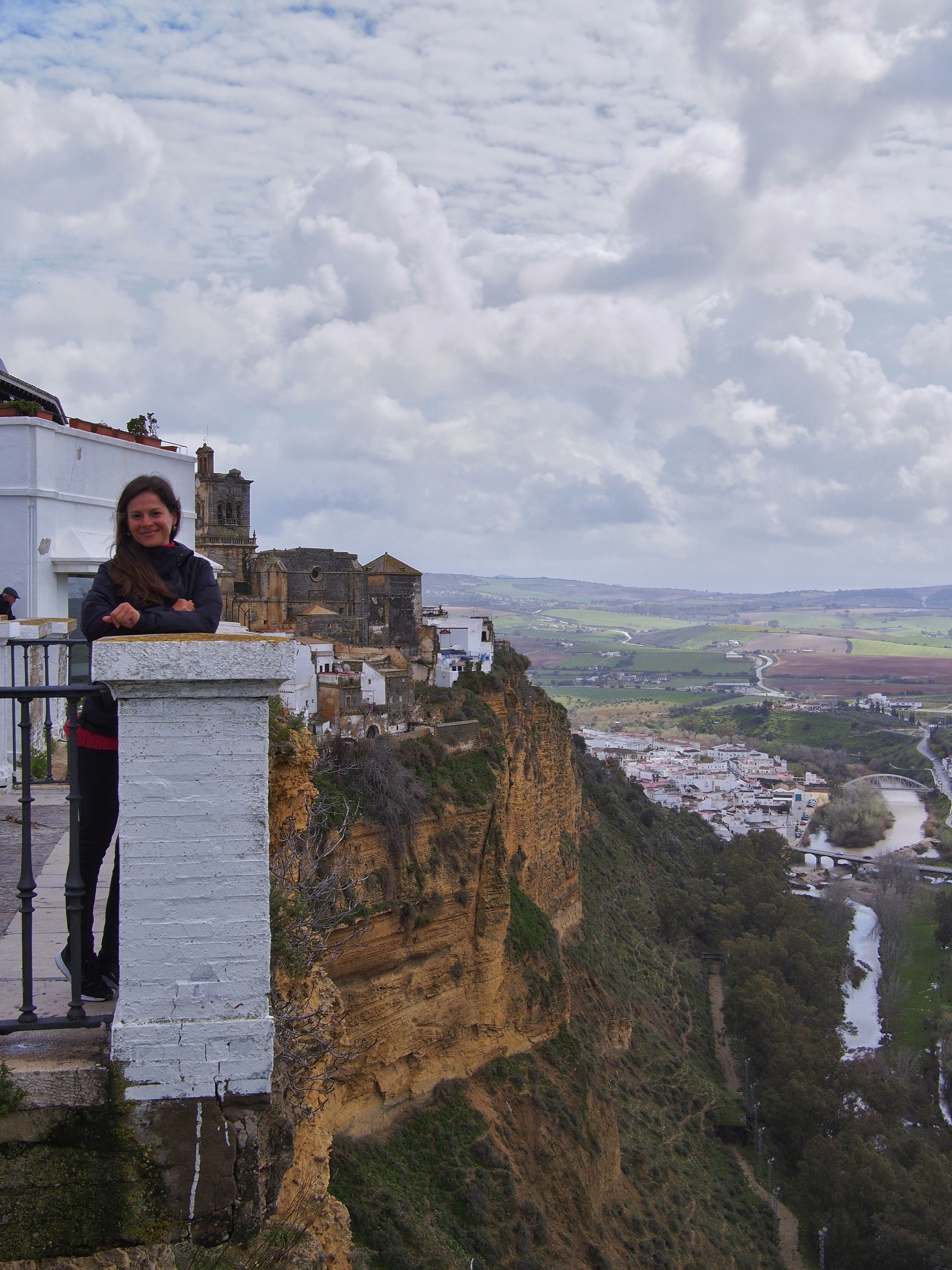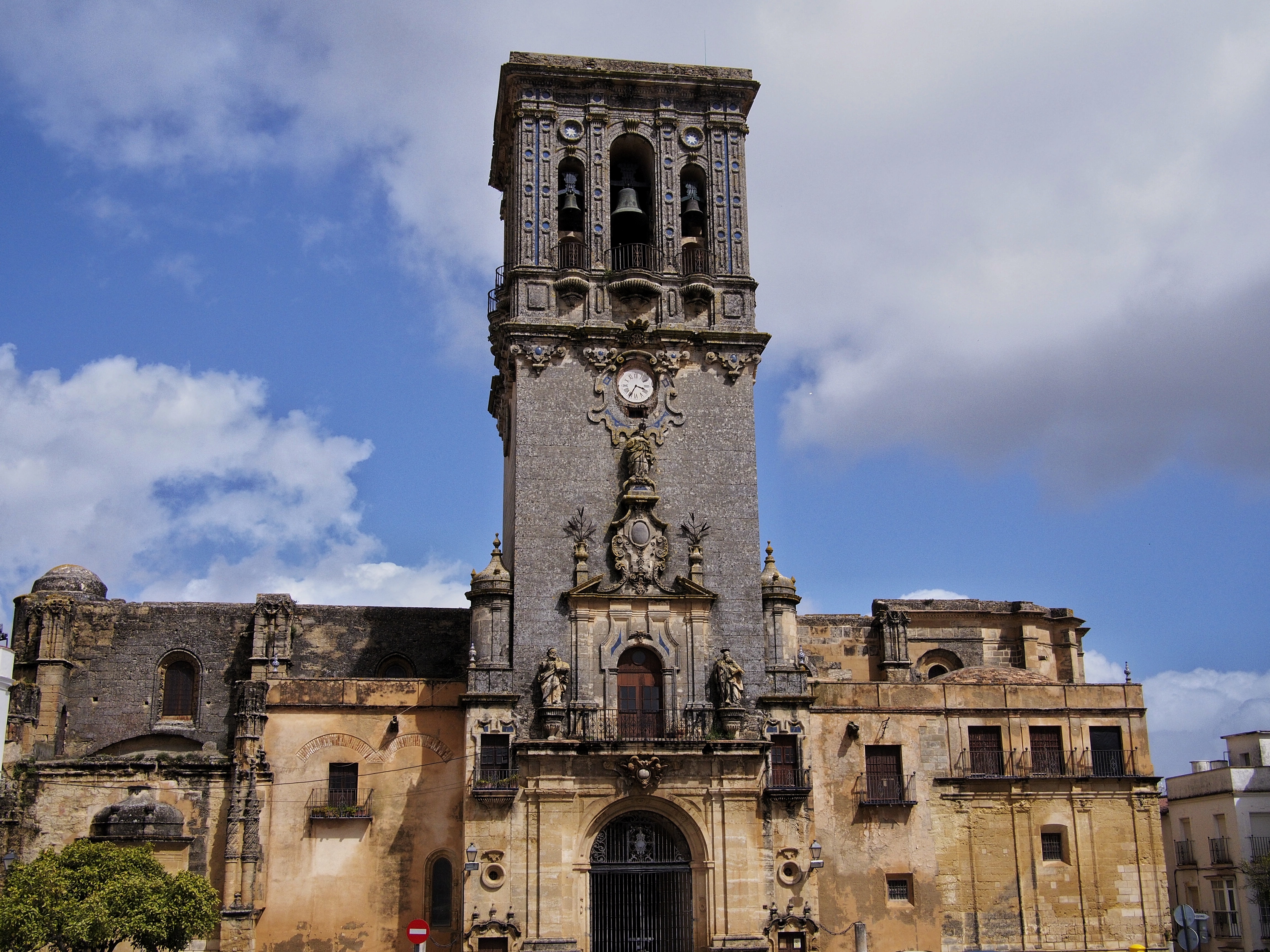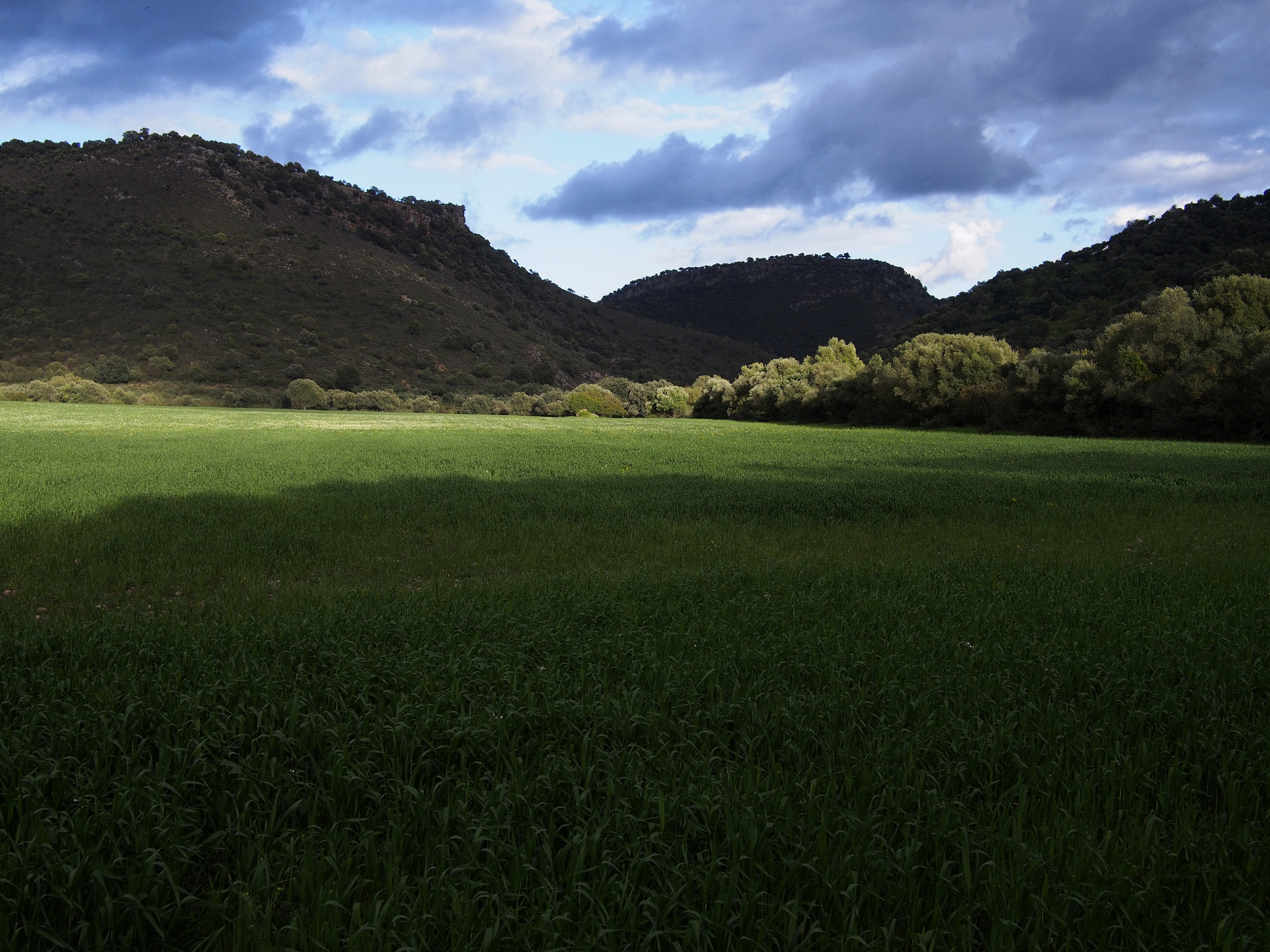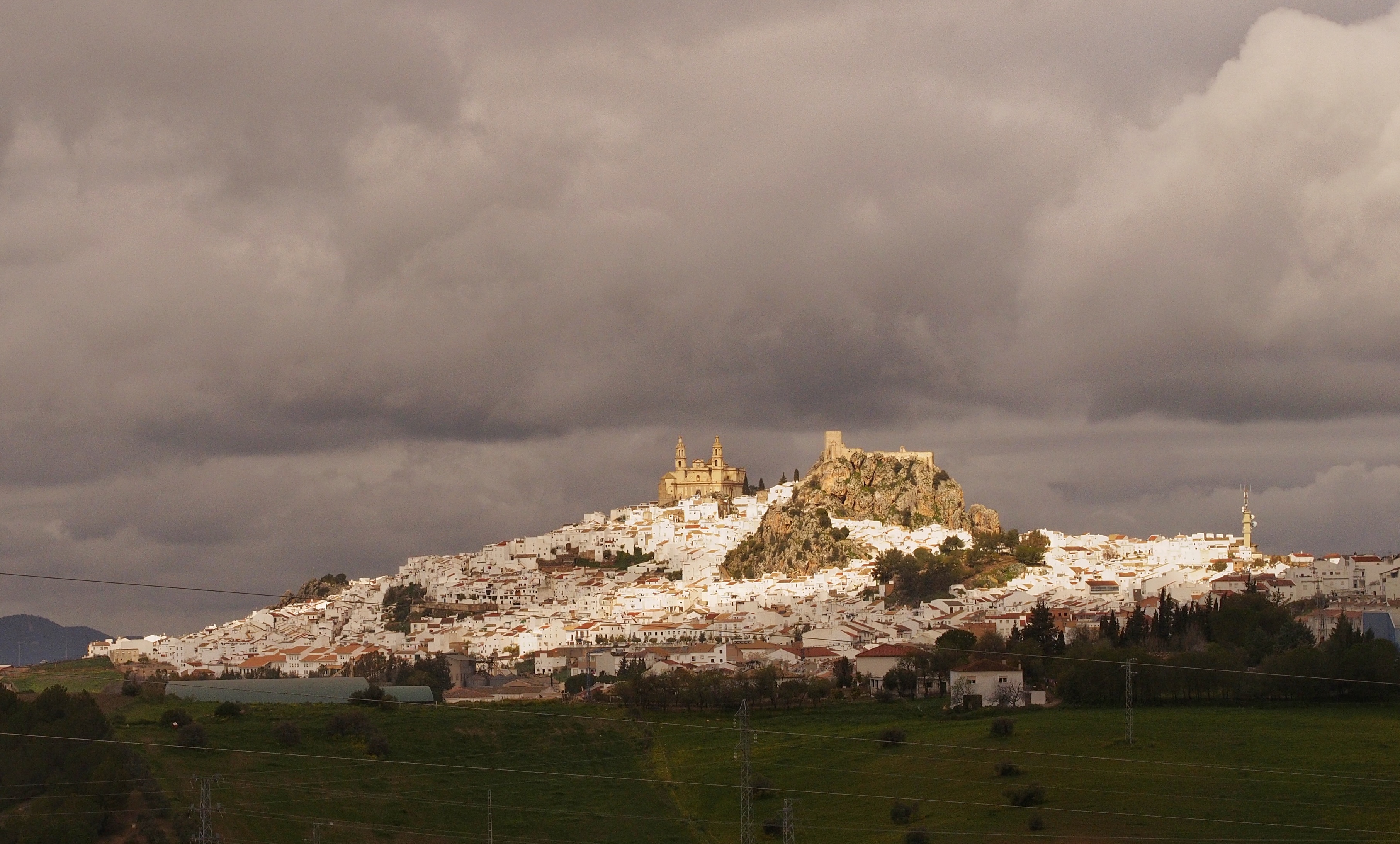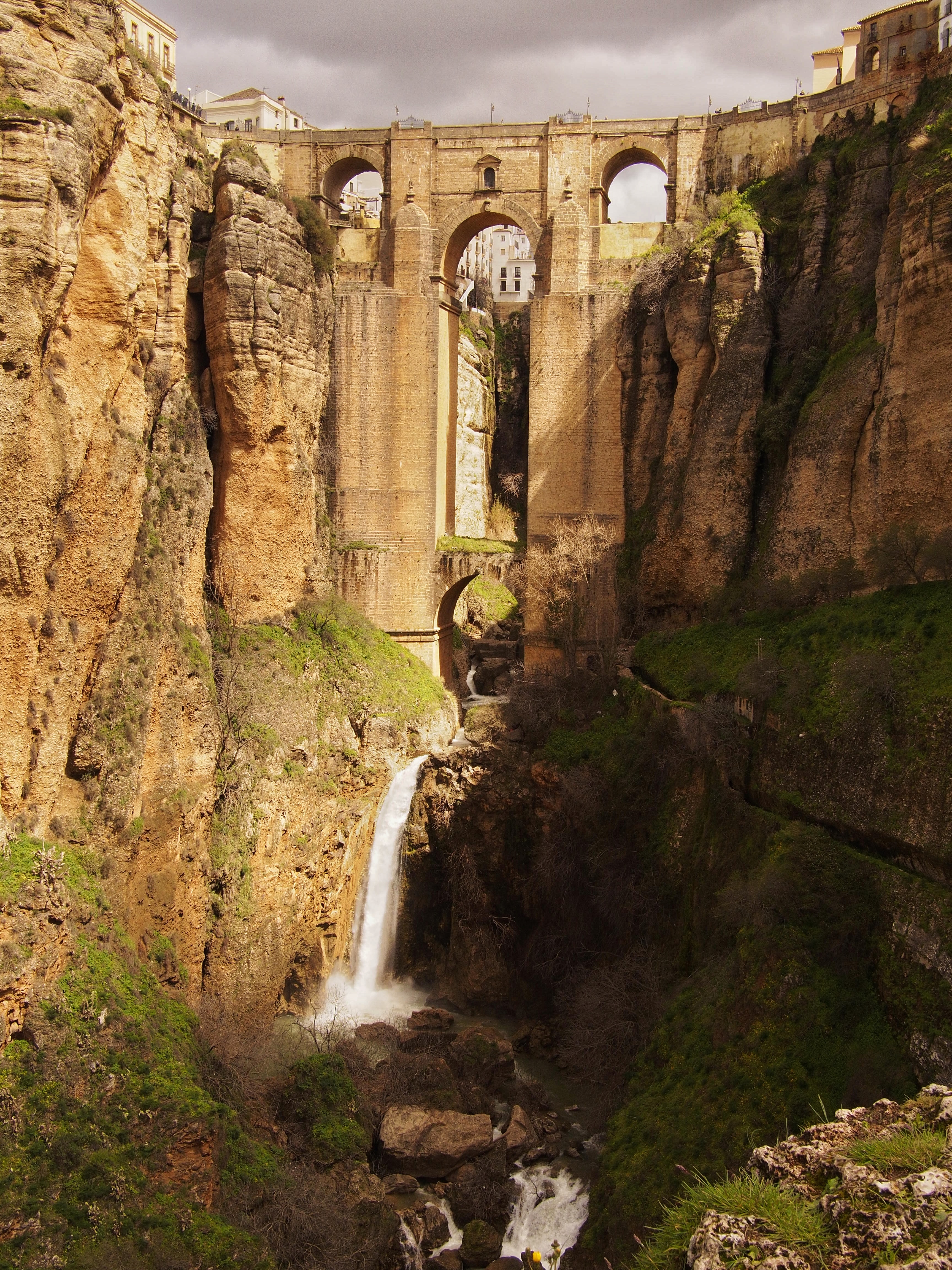The “pueblos blancos” have their origins from the arabic influence in the region of Andalusia. The name comes from the whitewashed walls of its buildings. Our first stop was Arcos de la frontera where we arrived battered by the rain and crosswinds. On one of the last ascents, I leaned my bike against a roadsign to walk back and help Andrea with hers. When i came back, I found my bicycle lying on the ground pushed over by the wind. I checked the guitar through its bag and was certain that part of the corpus was broken. With this thought and unsure how to break the news to Andrea we made the last kilometers to our guest house. We even asked the owner if he knew a Luthier to fix it as Andrea had the same impression when checking the guitarbag. When we got to our room and had a look at the guitar, it turned out that we were mistaken and that part of the reinforcement of the bag itself had given us the false impression. Quiet relieved we kept the camp kitchen in its pannier and went for dinner in the restaurant and were pleasantly surprised. Starting with gazpacho, I had grilled vegetables and ended with a chocolate cake for dessert.
The downside for cyclists visiting these white villages is its location on the most promint part of a hill and entering at the end of a day often involves some pushing up the steep streets. But they look oh so pretty.
We had a small walk through the tiny historic center, which came as a relief for our tired legs. There were two viewpoints we visited, here the “Balcon de arcos”,
and the basilica.
It was a lovely day when we left Arcos de la frontera, although we were quiet tired and couldn’t enjoy it at first. It didn’t help that we had to climb out of the valley of the rio Guadalete. But then we left the rather busy main road and could ride side by side for most of the day as hardly any traffic passed. After stocking up supplies in Puerto Serrano, we entered the “Via Verde de la Sierra”. It wasn’t that hard to find a spot for the night, and we felt lucky to pitch our tent in these surroundings.
The next day it started to rain again, but we still made good progres as we were protected from the wind by the surrounding mountains. Getting closer to Olvera a passing mountainbiker told us that it would be difficult to pass some muddy parts ahead because of recent rainfall. He suggested an alternative route with just some “tiny hills”. These turned out to be a little heavy for us loaded touring cyclists and once out of the valley, the wind made progres real slow. The rain started to become a downpour and so we arrived in Olvera soaked to the bone and being cold.
When leaving Olvera, the skies had cleared a little and we could enjoy these view looking back while we made the first break of the day.
Towards Ronda was a beautiful road. Some hills were challenging but always rewarding.
We stayed with Salvador, a writer, in his house. We had decided that seven degrees during the day and temperatures below the freezing point during the night called for some different accommodation than a tent, with us already sneezing a lot.
We spend one day in Ronda to see some of its sights, most prominently the bridge spanning the narrow chasm formed by a river dividing the city and the plateau on which it’s nestled. When you cross the bridge it is hard to grasps it’s beauty, but there is a path leading down the other side from where one can appreciate its magnitude.
As the weather was still not improving we opted for a short intermezzo in Malaga to escape the rain and the cold for a while. Just to get a train back close to Ronda and to cycle the “Via Verde del aceite”.
